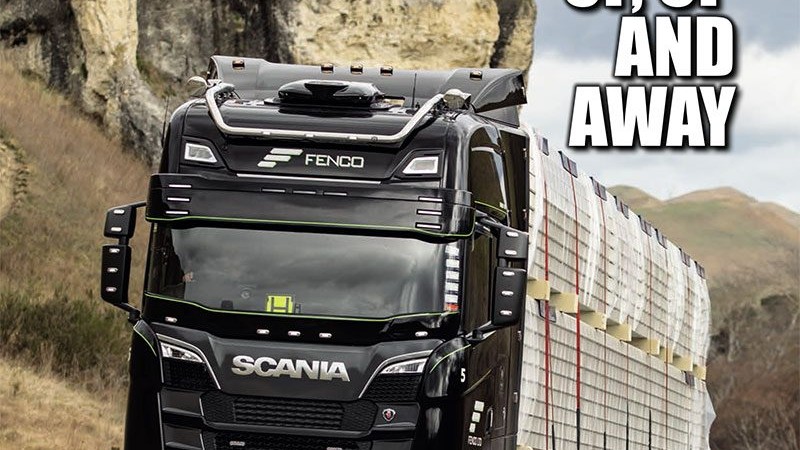Making a mark

It seems all we’ve spoken about this year is politics, policy and promises in the macro sense, or roading, funding and resilience at our micro level. But within all the noise, there’s a sense that change is in the wings, that there will not only be a new government, but new priorities, come 14 October.
Given this year’s events, it would be irresponsible for there not to be. We’ve witnessed the impact of extreme weather and the effect on communities at the mercy of vulnerable infrastructure and limited points of access. The costs to these communities – and those of the broader emergency responses and recovery initiatives – highlight the need for a fresh approach. Sure, that will carry costs and won’t be achieved overnight, but the long-term benefits would be of much more worth to every resident and every sector of the economy than the more common make-do-and-mend approach.
Last month, Dave and I made our first trip north since the new Pūhoi-Warkworth motorway was opened. Despite my picking out the project for its apparent oversights and early signs of damage to a section of the road in last issue’s editorial, we were impressed with it as a motorway overall. Compared with the old section, it cuts the journey time substantially, is a far more relaxed experience, and by nature, far safer. However, once off the motorway and headed through the Dome Valley, over the Brynderwyns, and further north on this appalling and deteriorating leg of SH1, the contrast is another pointer to the benefits of concerted infrastructure investment.
Of course, roading and infrastructure have been hot topics on the electoral agenda this year. Vying for the top spot on the promise list in the past few months would have to be the chosen option for a second Auckland Harbour crossing, unveiled in early August. It would’ve been contrary to the status quo for it not to include all modes for all people, which is 100% fine. But what concerns me – aside from the shambles that Auckland Light Rail is in now – is the cost, the time, and what will happen to the plan should the guard change come October.

As it is, Prime Minister Hipkins commented that it would be “into the next decade before we see it”. No doubt, as infrastructure projects go, this one’s a biggie and sorely needed. But if the track record set by other recent big projects (Transmission Gully, Pūhoi-Warkworth, and so on) is anything to go by, the cost and timeframe will be an underestimation.
Towards the end of August, the Ministry of Transport released the draft Government Policy Statement (GPS) on Land Transport 2024 as well as the New Zealand Freight and Supply Chain Strategy – both of which have significant implications for the road transport sector over the next 10 years and beyond.
The key question is, can they chart a realistic way forward? The Freight and Supply Chain Strategy has just been published (at the time of my writing, I haven’t had a chance to familiarise myself with it). The draft GPS has attracted comprehensive commentary, and there are indeed some highlights worthy of discussion – not least of which is the proposed increases in petrol taxes and RUCs. We’re told this will result in $1.4 billion in revenue over three years. While some might have a different opinion, I’m willing to accept the increase and pay my fair share for using the roads – so long as it’s ploughed back into the road network and not used to subsidise other modes.
But that won’t change under the draft. Yes, the government is aiming for a multi-modal freight system. That’s good – every mode has its merits – but it can only work if each pays its share and receives its dues for the proportion of heavy lifting it does. The draft adds that road users will “benefit from reduced emissions, more resilient freight options, safer roads with fewer trucks and less damage to roads…”
Which brings us full circle – among the key priorities in the draft are improved resilience and increased investment in maintenance. There are also 15 Strategic Investment Programme projects that “present an opportunity for transformational change”, of which 10 relate directly to state highways. It’s encouraging to see SH1 (Cambridge to Piarere), SH29 (Tauranga to Tauriko) and SH6 (Nelson, various) listed. SH1 Warkworth to Whangārei (including Te Hana to Brynderwyns, Warkworth to Wellsford and Whangārei to Brynderwyns) is rightly included too.
But it’s disappointing routes into other vulnerable sections of the country, such as SH5 Napier- Taupo and SH2 into Gisborne, are not listed. The critical link between the Waikato and the Bay of Plenty also seems to be missing.
The GPS is open for public consultation until 5pm on 15 September. As it will be on the day the polls open, it’s in all our interests to have a say and ensure the government puts its money where its mouth is.

Read more
40 fabulous years
0 Comments3 Minutes
40 not out!
0 Comments4 Minutes
The more things change…
0 Comments5 Minutes
Keeping up with the times
0 Comments4 Minutes




